|
|
|
Meal Appeal for Children
|
|
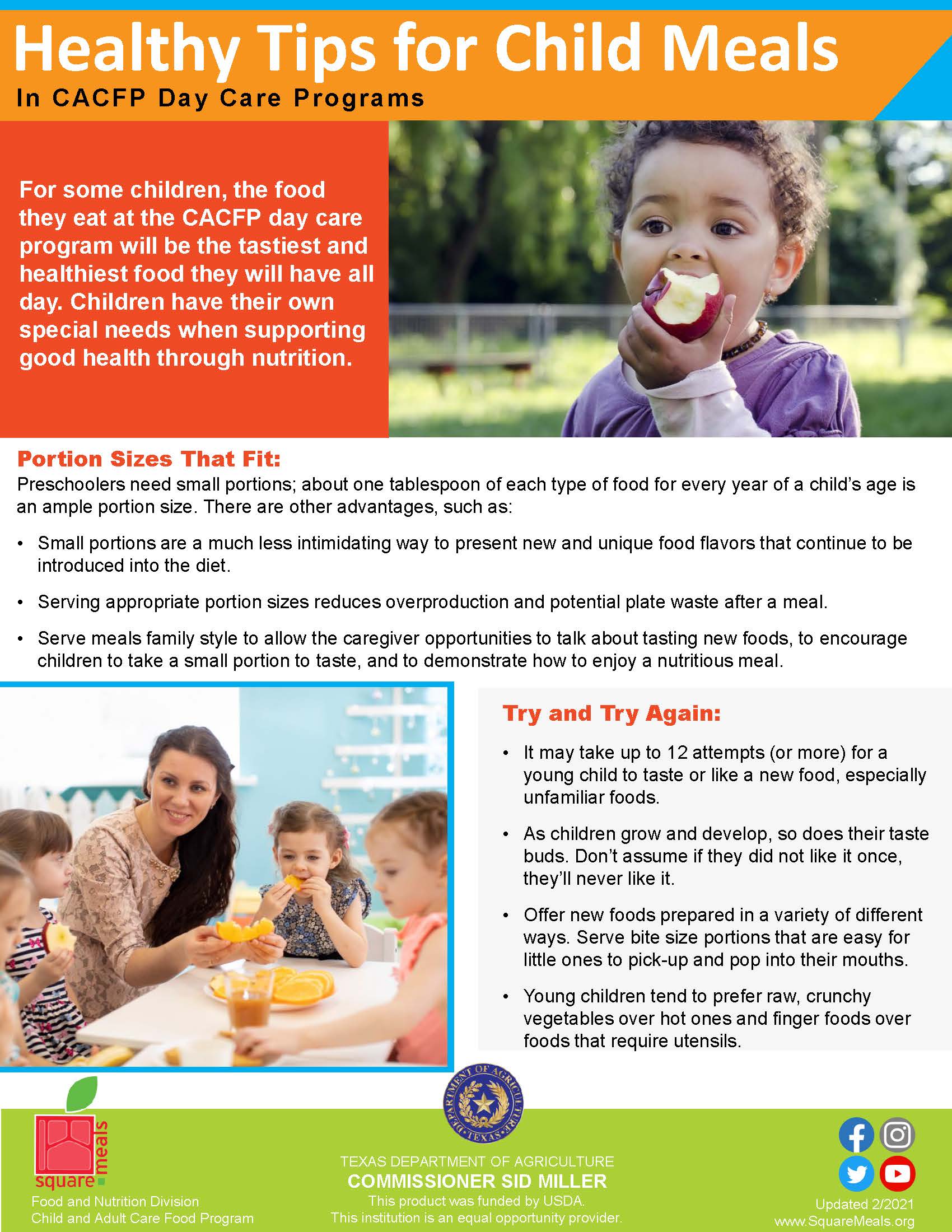
Click the image to download the Healthy Tips for Child Meals resource!
|
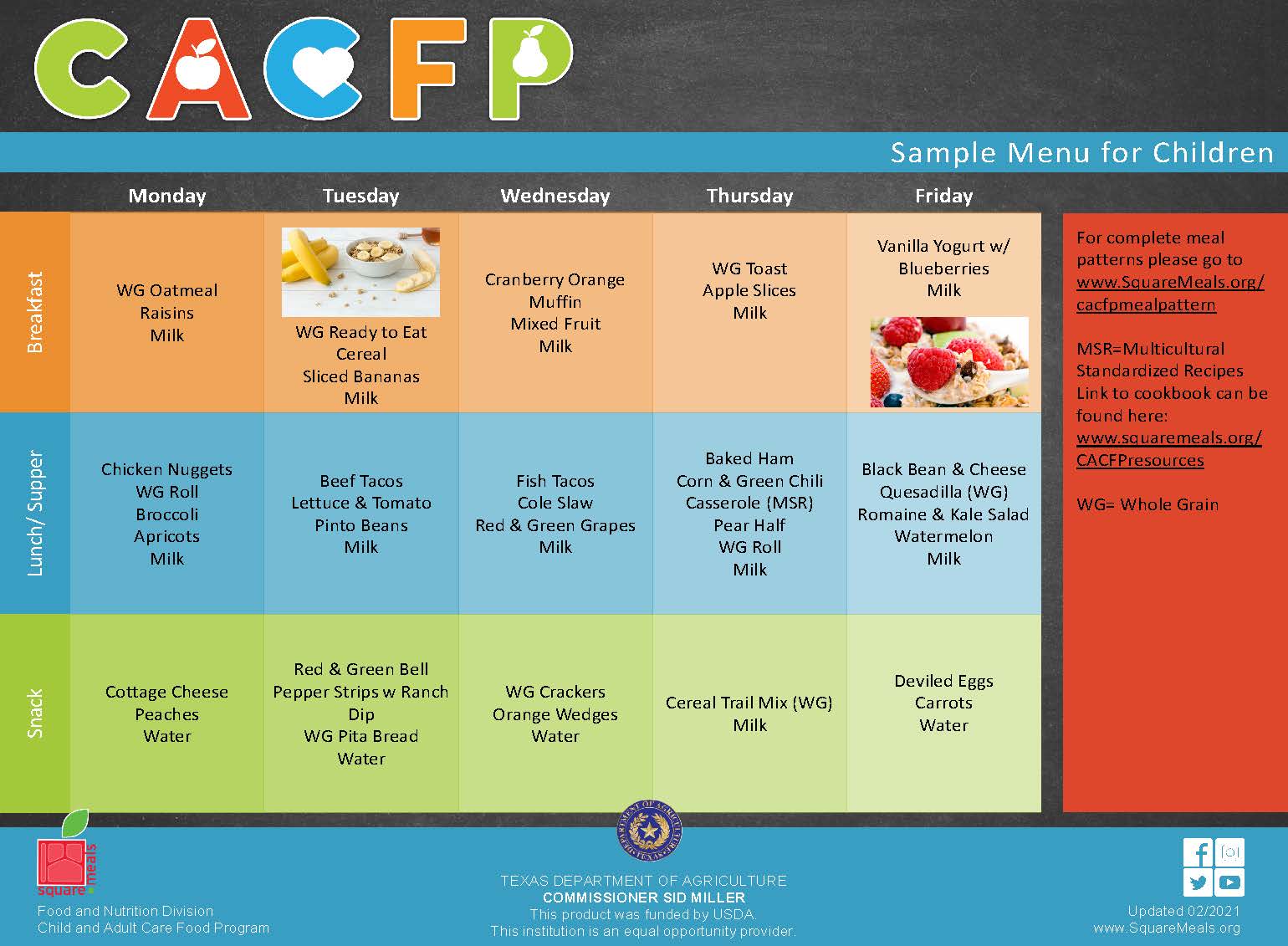
Click the image to download Sample Menus!
|
Use the + buttons below to expand each section.
Center and Home Gardens

Day care center and home gardens serve preschool children throughout the state of Texas. Hands-on garden activities teach children the joy of gardening and the connection between healthy food and the environment. Gardens also encourage centers and homes to purchase more local produce, thus enhancing the appeal, acceptability and nutrition value of meals and snacks served through CACFP.
Benefits to Preschool Children
- Nourishment - Nutritional value of fruits and veggies
- Health Habits - Eating better and more physical activity
- Sense of Accomplishment - Learn cooperation, teamwork and social skills; gain self-confidence along with new skills and knowledge; garden based teaching addresses different learning styles and levels of intelligence.
- Responsibility for the Environment - Provides an environment in which they learn to work, play, and interact with child care providers, parents and the community while growing plants. They learn how to connect with and appreciate their natural world.
Download this handy 2-page resource How to Build a Raised Edible Garden to get started!
|
Farm to Child Care
- Additional resources on how to get started with Farm to Child Care
- Read about CACFP child care facilities with a successful Farm to Child Care Program and center/home gardens
- View pictures of indoor and outdoor vegetable and fruit gardens
|

|
Texas AgriLife Extension Service – Master Gardener
- Guides, books, fact sheets and other publications related to gardening
- Search Texas Master Gardener Programs by County and find a Master Gardener Specialist
|
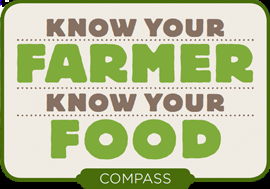 |
Know Your Farmer Food Compass (USDA)
- Information on local and regional food systems for years 2009-2012
- Search projects in your area
|
Dining Experience

Make Food Fun
 |
| Pittsburg ISD earth worms for Earth Day |
Associate new foods with positive experiences.
Children often hesitate to try new or unfamiliar foods, especially between the ages of 2 and 5. There are many creative ways to introduce new foods to kids such that it’s a fun, positive experience and eases their doubt. Some examples include:
- Give foods fun names
- Cut food into child-friendly shapes
- Offer the new or unfamiliar food with a favorite food
- Build a menu that has a colorful variety of food offerings
- Boost food flavors with seasonings, dips, salsas or purees
- Introduce food with an activity, such as a game or food tasting party
Visit the Choose My Plate website for snack and meal suggestions that help introduce children to fun, smart and healthy foods.
Win Over Picky Eaters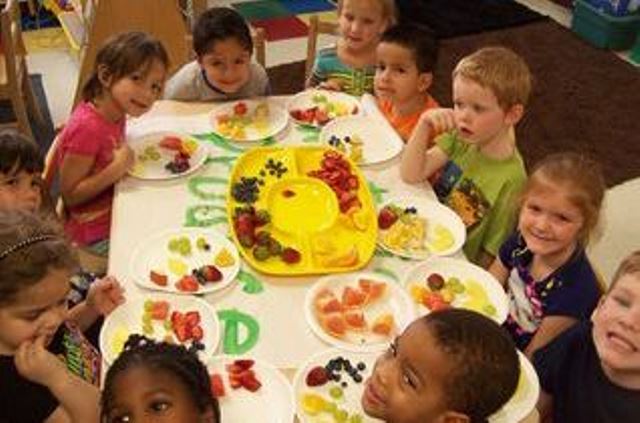
Create a kid friendly environment for children to try new foods.
Irregular and odd eating behavior is very common among young children. Review the Institute of Child Nutrition’s Happy Mealtimes for Healthy Kids in order to reduce stress and struggles during meal and snack times.
- Don’t Force Children to Eat – Let the child make the decision to try new foods. Give young children time to try new foods; it can take more than a dozen tries to enjoy a new taste.
- Be Determined – Routines offer children many opportunities to try a new food in a familiar and comfortable environment.

- Do Not Bribe– This is a short term solution and may lead to more difficulties in the future.
- Allow Children to Role Model– Less picky eaters can encourage pickier eaters to try something new.
- Explore Food – Allow children the ability to touch, feel and explore their food.
Use Different Service Styles
“Best Practice” Family style: The CACFP has long been recognized for its goals of providing nutritious meals to children and helping them establish good eating habits at a young age. Family style meal service further enhances these goals by encouraging a pleasant eating environment that supports and promotes meal time as a learning experience. Some family style basics:
- All food/beverage components of a reimbursable meal, in minimum required amounts, are served in common serving dishes (bowls, platters, pitchers) and placed on the table for all children and caregivers.
- Serving dishes are passed from one child to another and the children are allowed to serve themselves, based on developmental readiness, and assistance from the supervising caregiver.
- Caregivers encourage children to take the minimum required portion of each food component; however, if a child is hesitant, the caregiver will encourage them to try a small portion/bite.
- If the child declines the food the caregiver will not force the child to take the food item. A child’s meal may be claimed for reimbursement even if s/he declines to select one or more offered food items.
Pre-plated style: Staff pre-fill plates and glasses with all food/beverage components of a reimbursable meal pattern and serve to children/adults in the minimum required amounts
Combination style: This meal service style combines pre-plated and family style meal services. It can be used when certain food items of a meal cannot be easily or safely passed in common serving dishes from one child to another. Example, hot soup or chili, if the adult is “pre-plating” these food items, the minimum required portion size must be served. In summary, the portion size of food items that are “pre-plated” must meet the minimum required portion size and food items served “family style” is decided by the child.
Cafeteria style: Commonly found in school settings. Children/students are served the food components of their meal by food service staff as they proceed down the serving line. In some situations, a supervising adult may assist a child/student with his/her tray if unable to safely carry their tray to a cafeteria table. If a CACFP contracting entity receives or the children eat their meals at school, they may follow the NSLP meal pattern.
Menus, Cookbooks and Recipes

For resources for the CACFP Meal Pattern, click here!
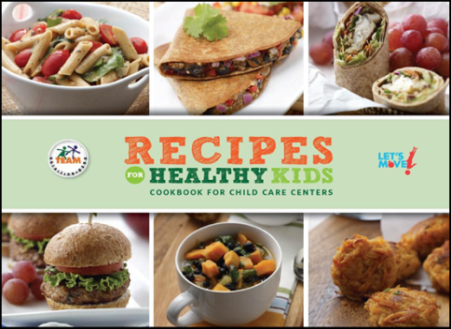 |
Recipes for Healthy Kids: Cookbook for Child Care Centers and Child Care Homes (Team Nutrition)
- Kid-tested, kid-approved recipes for child care centers and child care homes
- Print the entire cookbook, or order a free printed copy online
- Recipe yields 25 – 50 servings for child care centers
- Recipe yields 6 servings for child care homes
|
 |
More Than Mud Pies (Institute of Child Nutrition)
- Nutrition education curriculum to encourage positive ideas about nutrition and foods
- 54 lessons built around the seasons of the year to learn about growth, nutrition and food preparation
|
 |
Fruit and Veggie Quantity Recipe Cookbook
- Collection of soup, salad, breakfast, side dish, main dish and other recipes
- Includes family style recipes
- Links to information about fruits and vegetables
|
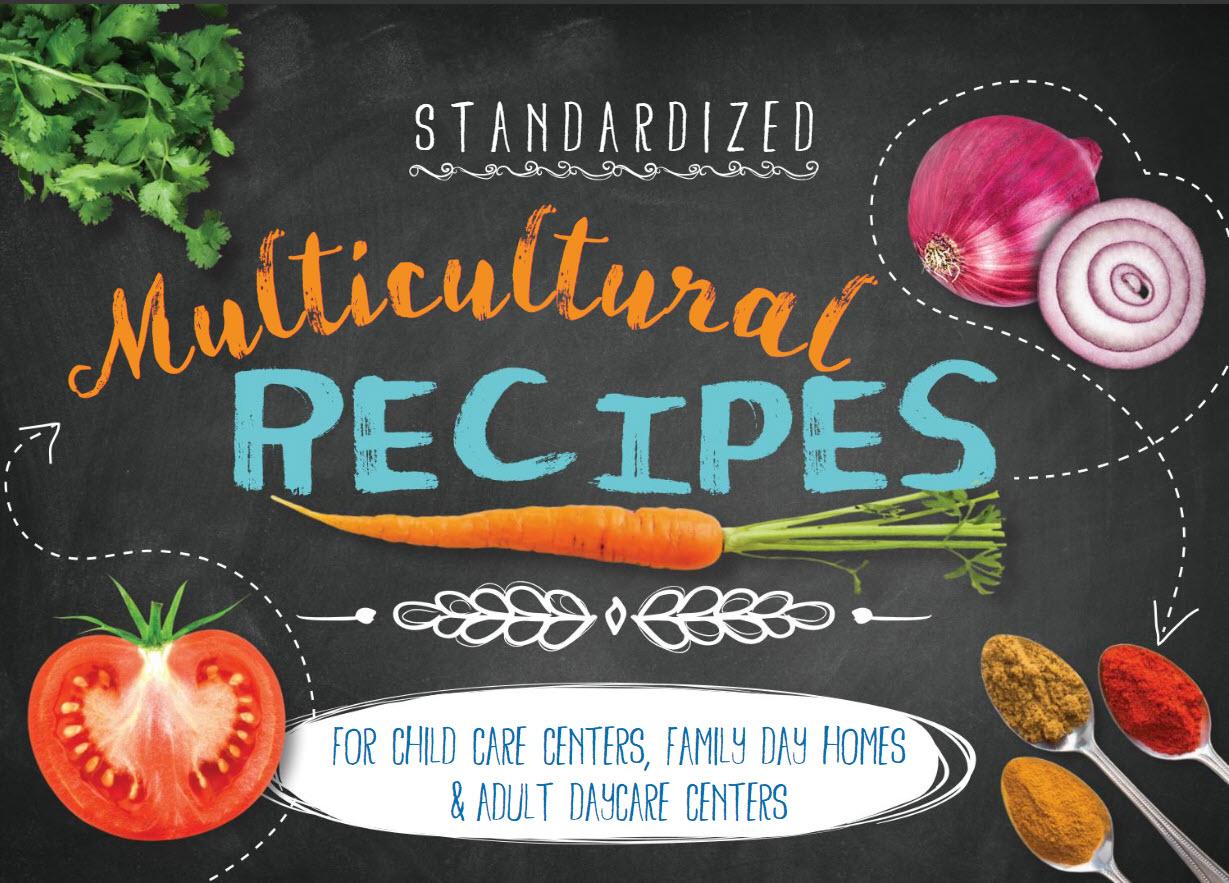 |
Multicultural Recipe Book - This cookbook for for Child Care Centers, Family Day Homes & Adult Daycare Centers contains recipes featuring foods that reflect the cultural diversity of the Lone Star State. Children and adults have tested and approved these delicious and healthy recipes. Try a few of the recipes and enjoy a fun, educational and very tasty multicultural dining experience.
|
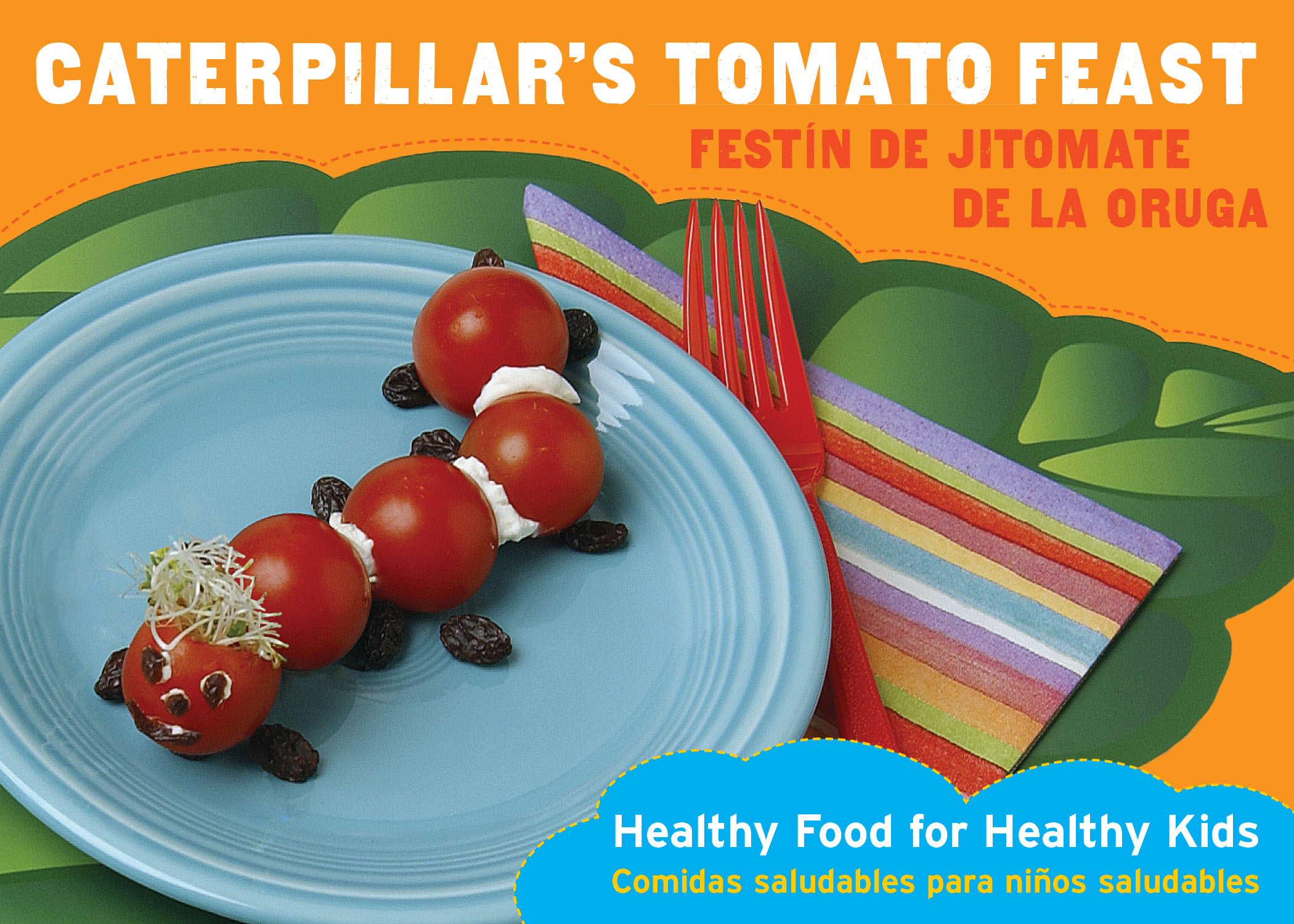 |
Recipe Card - Caterpillar's Tomato Feast - A recipe for a fun meal for kids! (Available in Spanish)
|
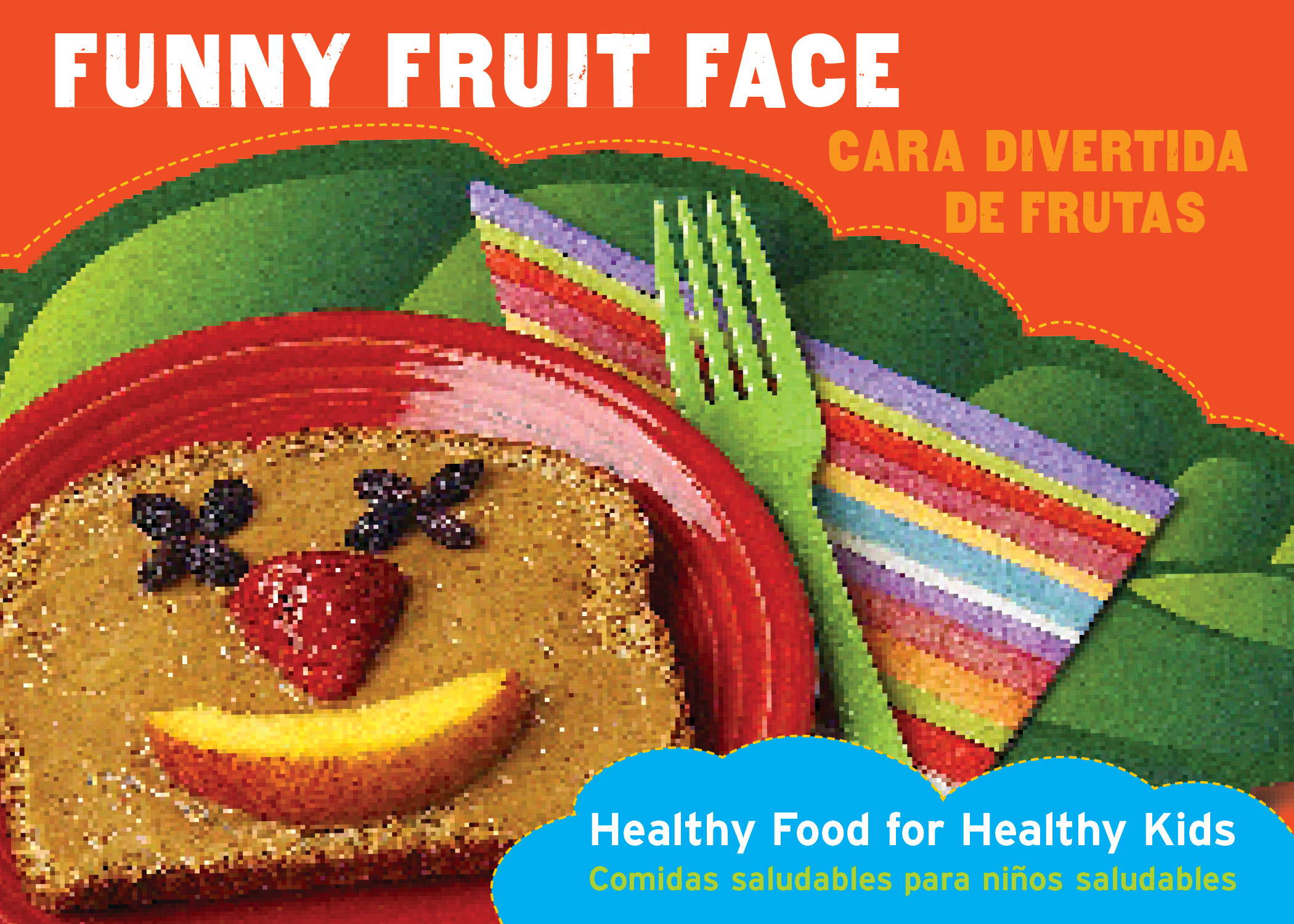 |
|
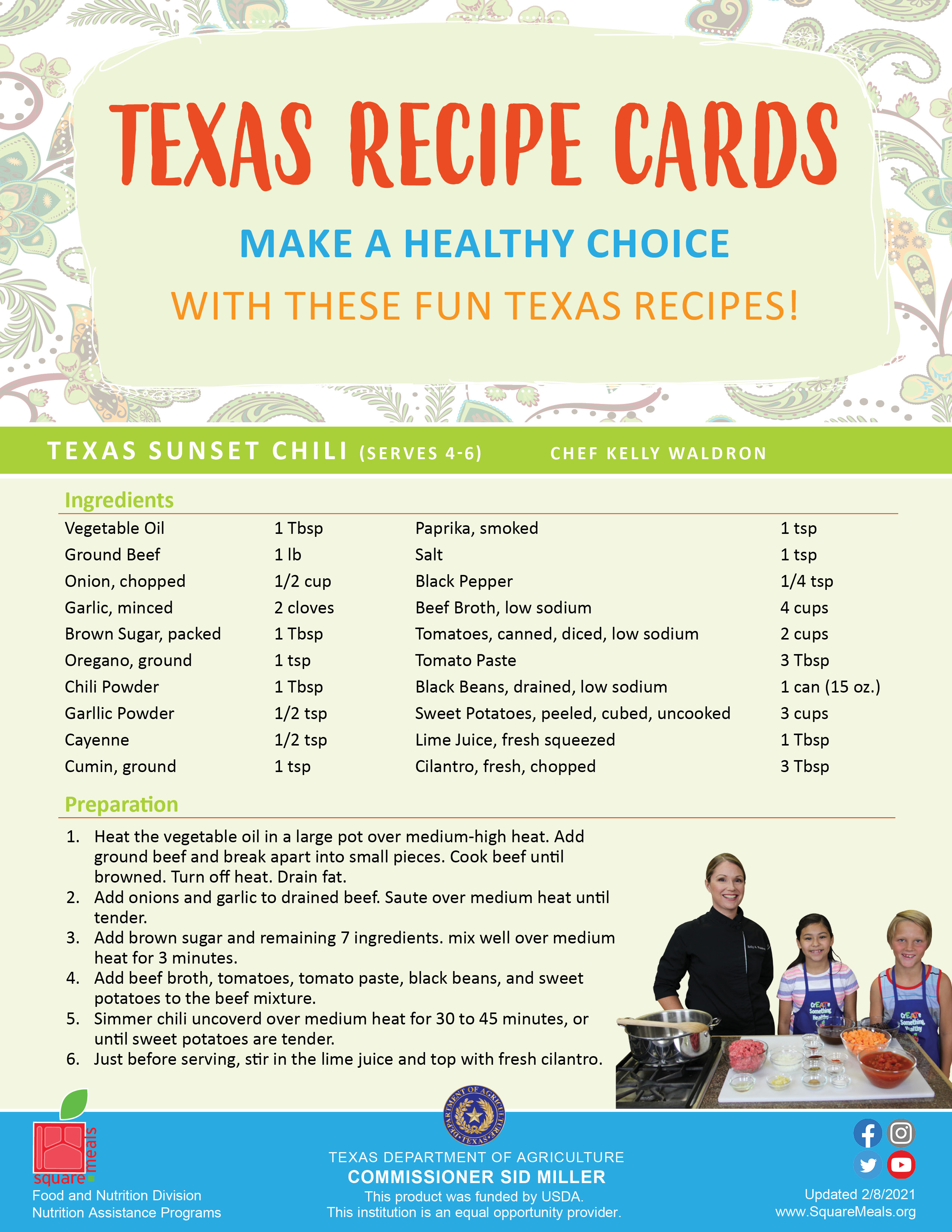 |
|
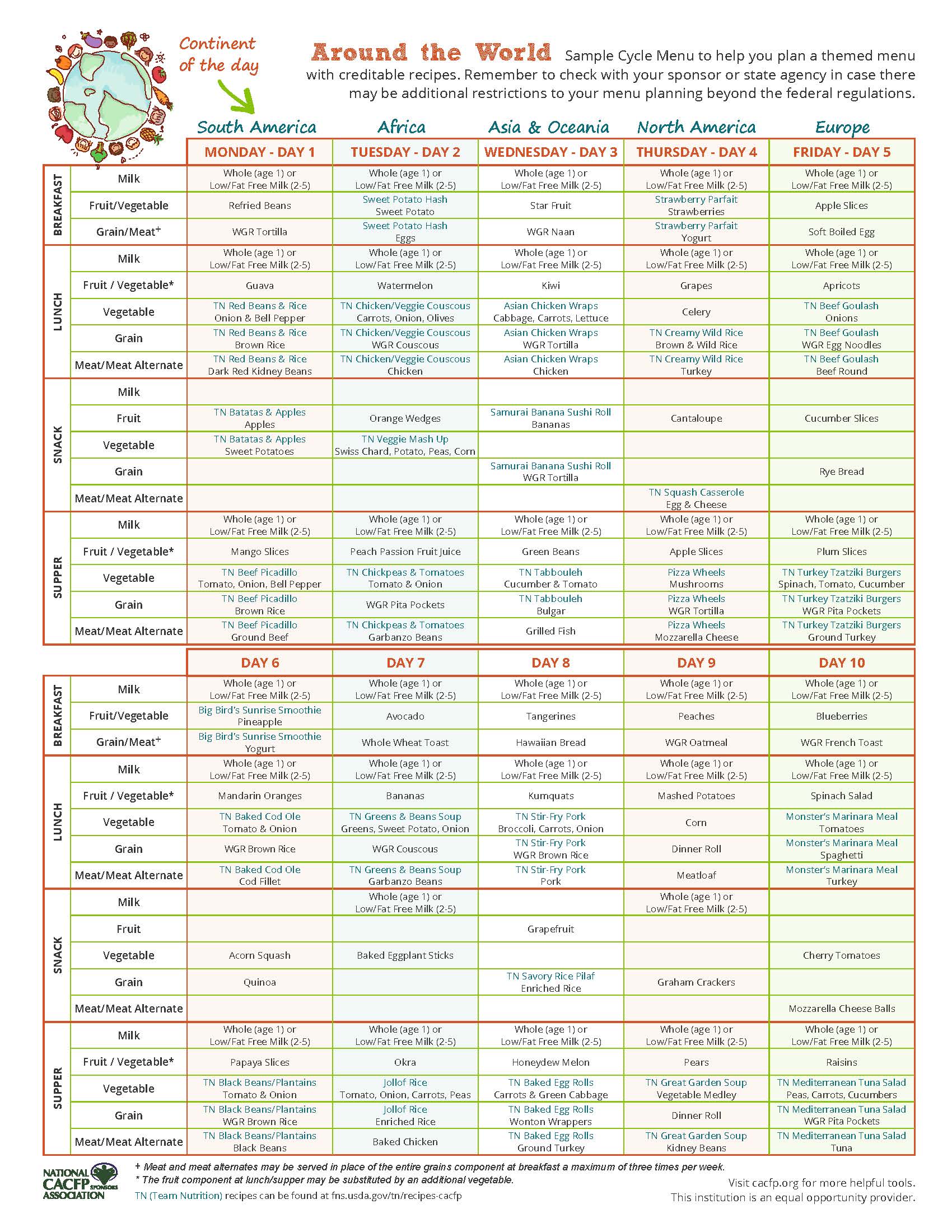 |
Sample Menu Incorporating Recipes from Around the World - This handout features recipes from around the world. Full recipes are found on Team Nutrition!
|
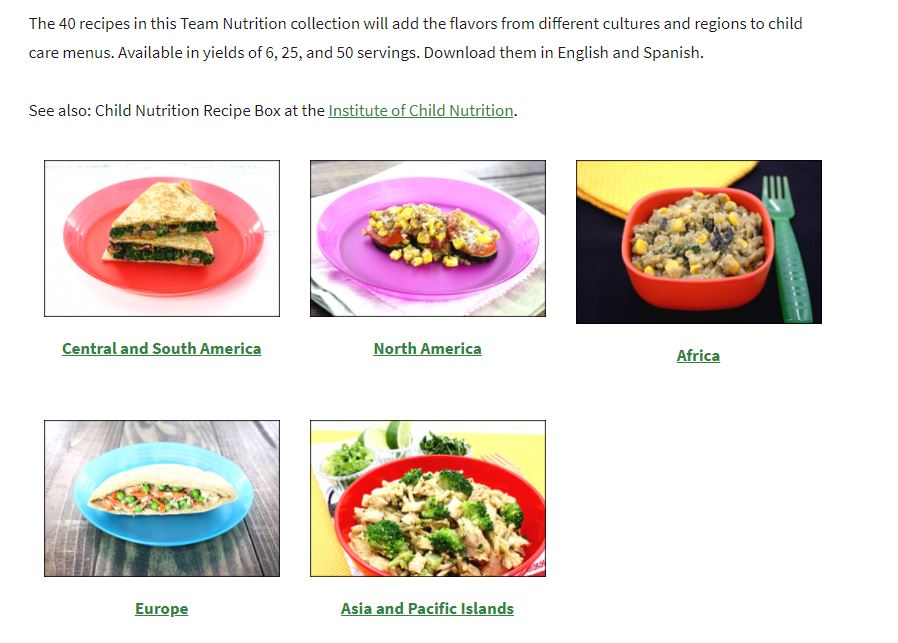 |
Multicultural Child Care Recipes - The 40 recipes in this Team Nutrition collection will add the flavors from different cultures and regions to child care menus. Available in yields of 6, 25, and 50 servings. Available for download in English and Spanish.
|
Taste Testing

Taste tests are most effective when it is a part of a multi-component intervention. The CDC recommends taste testing foods to increase preference and consumption. The act of repeated exposure to a variety of foods is critical. Children learn about what they like by tasting, feeling, seeing, and smelling the foods.
- Allow kids an opportunity to interact with new foods. Avoid forcing kids to taste it. They can touch and smell it and stop there. Be sure to praise them for taking those first steps.
- Keep it simple! Hype up the food being tested and remember to keep a neutral face as kids are taking a cue from you.
- Collect and analyze data on how the food item made the children feel, how it looked, smelled, and tasted. Use this opportunity to expand children’s vocabulary by introducing new adjectives to describe food. Below are sample taste test forms:
- I Tried Local: Taste Testing Kits
- Taste Test Questionnaire
- Kids Food Critic Activity Tasting Ballot
- Give children a nonfood reward for trying the new food item.
- Complement nutrition education lessons with a taste test or use taste-testing to celebrate. Ask students to describe the size, shape, color, smell, and texture of the food.
- Schedule a taste testing party for a particular food group. Some ideas are listed in the Resources section.
- Do not yuck someone’s yum. Teach children phrases such as “maybe next time”, “I may like it prepared another way” “Wow! That’s interesting.” “I love it.”
- Create experiences beyond the food. Can you have a farmer come visit the school to talk about how the food item is grown? Here is a fact sheet on Farm to Preschool.
- Is there a book the children can read and then plan the taste testing around? Can the children create a brochure to advertise the food?
- Get parents engaged, either taste test the food during workshops, meetings or share the recipe with families after the food item has been tested at school.
- Phrases That Help and Hinder: Use these specific phrases to help your child develop healthy eating habits.
- Kitchen Helpers This handout provides activities in the kitchen that are age appropriate.
Whole Grain-Rich Products

What is a Whole Grain?
The term whole grain-rich is not an industry recognized term. It is used in the federal child nutrition programs to mean at least 50% of the grain item is whole grain and the rest is enriched grain, a bran or a germ. The CACFP requires that at least one grain serving per day, across all eating occasions, is whole grain-rich. Refer to these resources for recommended cooking times and best practices when preparing whole grain-rich pasta, which need more cooking time. All are suitable for display in the kitchen for quick reference during meal preparation.
Whole Grain-Rich Pasta Cooking Resources
|
|
|
|
|
|
|
|
|
|
|
Assistance available in English and Spanish. Please call 877-TEX-MEAL (877-839-6325) for help. Additional translations services available as well.
|
|
In accordance with federal civil rights law and U.S. Department of Agriculture (USDA) civil rights regulations and policies, this institution is prohibited from discriminating on the basis of race, color, national origin, sex, disability, age, or reprisal or retaliation for prior civil rights activity.
Program information may be made available in languages other than English. Persons with disabilities who require alternative means of communication to obtain program information (e.g., Braille, large print, audiotape, American Sign Language), should contact the responsible state or local agency that administers the program or USDA’s TARGET Center at (202) 720-2600 (voice and TTY) or contact USDA through the Federal Relay Service at (800) 877-8339.
To file a program discrimination complaint, a Complainant should complete a Form AD-3027, USDA Program Discrimination Complaint Form which can be obtained online at: https://www.usda.gov/sites/default/files/documents/ad-3027.pdf, from any USDA office, by calling (866) 632-9992, or by writing a letter addressed to USDA. The letter must contain the complainant’s name, address, telephone number, and a written description of the alleged discriminatory action in sufficient detail to inform the Assistant Secretary for Civil Rights (ASCR) about the nature and date of an alleged civil rights violation. The completed AD-3027 form or letter must be submitted to USDA by:
|
|
1. Mail:
U.S. Department of Agriculture
Office of the Assistant Secretary for Civil Rights
1400 Independence Avenue, SW
Washington, D.C. 20250-9410; or
2. Fax: (833) 256-1665 or (202) 690-7442; or
|
|
| This institution is an equal opportunity provider. |
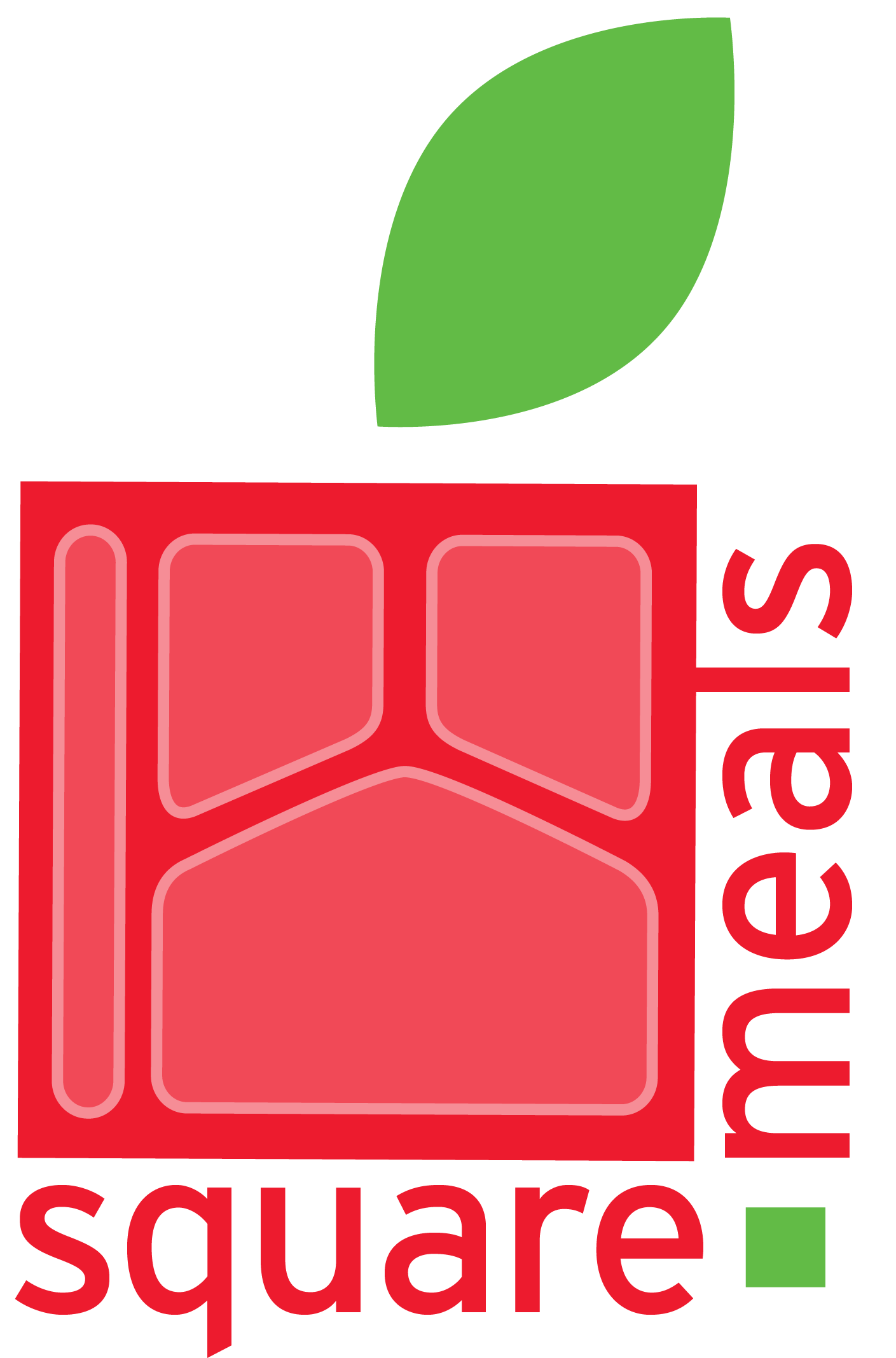 |

|
|
|